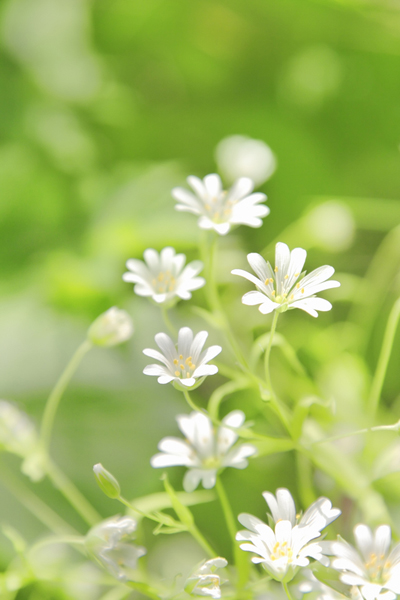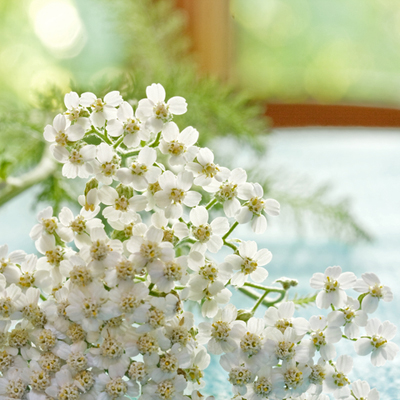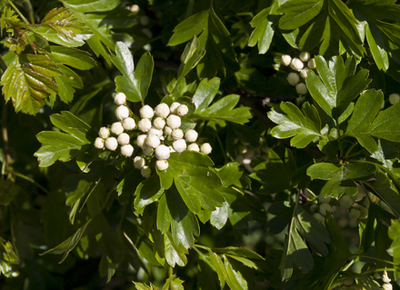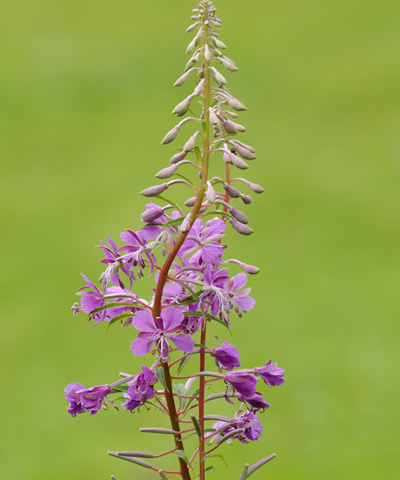What can you eat from the hedgerow?
You can find some delicious ingredients in hedgerows at this time of year – read our guide to foraging from nature’s larder


Chickweed

Delicious in... a green salad
Hens and their chicks adore it, hence the name. The flavour when raw is baby sweetcorn and pea-sprout. Include it in salads with more mustardy greens-rocket, watercress, endive-and dress just before serving with walnut oil and a sprinkle of wine vinegar.
To cook, yank up the whole plant, pick off the stringy white roots, rinse thoroughly and cook in a lidded pan for a minute or two. You'll need plenty: two close-packed cupfuls of raw leaves will produce just one tablespoonful of cooked greens. To finish, drain and squeeze dry, chop thoroughly and stir into hot cream-even nicer topped with grated cheese and blitzed under the grill-beat it into buttery mashed potato or use it as a finishing stir for a soup or a stew.
Yarrow

Delicious in... a creamy cheese sauce
With its feathery leaves and square stalks topped by pinkish-white blossoms, yarrow was once planted in herb gardens for medicinal as well as culinary purposes. Common names reflect its value as a salve for wounds-soldier's woundwort, bloodwort, staunchweed-and its Latin name, Achillea millefolium, comes from the legend that Achilles used it to treat his army. It was also known as sneezewort as the leaves, dried and powdered, were taken like snuff as a cure for headaches.
Exquisite houses, the beauty of Nature, and how to get the most from your life, straight to your inbox.
The feathery leaves have a peppery, spicy, aniseed flavour that increases in strength as the plant matures. Add young fronds, finely chopped, to a salad or stir into a green salsa with olive oil and lemon. The mature fronds are best cooked. Strip the fronds from the stalks, rinse and shake them over the heat in a closed pan with a little salt and a splash of water until tender, then drain. Beat into mashed potato or combine with a creamy cheese sauce.
Plantain

Delicious in... buttery mashed potato All three of our native plantains are edible, although the tenderest and most pot-worthy is Plantago lanceolata, long-leaf or hare's ear. The flavour is brassica with a touch of bitterness and the texture, even when young, is chewy. As the plant matures, it shoots up a remarkably tall and slender stem with a flower-spike that looks like a mini-ature bullrush. Tender young leaves can be shredded into a salad, but full-grown greenery should be cooked. To prepare, nick out the central stalk, rinse, shred and cook in a closed pot in the water that still clings to the leaves, drain thoroughly and dress with olive oil and lemon juice or beat into mashed potato. The leaves also make delicious fritters.
Hawthorn buds

Delicious in... fish pie The tender leaves of the May tree are the first growth in the hedgerow and were known to generations of field workers and schoolchildren as bread-and-cheese, one of the hedgerow snacks. The flavour of young hawthorn is peppery, fresh and sweet until the flowerbuds open, when the taste becomes increasingly bitter, although a brief soaking in salted cold water will soften the bitterness.In cooking, treat hawthorn greens like parsley: add whole to mild-mannered leaves in salads or chop them finely and stir them into sauces as a flavouring herb at the end of cooking or, alternatively, combine them with smoked fish in fish pies, fishcakes and kedgeree.
Rosebay willowherb

Delicious in... a summer risotto
The most useful of the willowherbs to the cook is the beautiful Epilobium angusti-folium or fireweed, whose shocking-pink flowers light up our countryside from late spring to the end of summer. Pick first growth as soon as they appear. Later, as the plant shoots skyward, gather the tops only as far down as the stalk will snap with ease and before the buds unfold into flowers. The flavour of the young tops is mild and sweet with a backnote of bitterness: to soften it, scissor or chop them into short lengths and soak them in salted water for an hour or two.
To prepare the spears for inclusion as the herby element in a risotto, or as a finishing ingredient for a dish of summer vegetables, roughly chop them and drop them into a hot pan with very little oil, salt lightly and toss them over a high heat for a matter of moments.
* Follow Country Life magazine on Twitter
Country Life is unlike any other magazine: the only glossy weekly on the newsstand and the only magazine that has been guest-edited by His Majesty The King not once, but twice. It is a celebration of modern rural life and all its diverse joys and pleasures — that was first published in Queen Victoria's Diamond Jubilee year. Our eclectic mixture of witty and informative content — from the most up-to-date property news and commentary and a coveted glimpse inside some of the UK's best houses and gardens, to gardening, the arts and interior design, written by experts in their field — still cannot be found in print or online, anywhere else.
